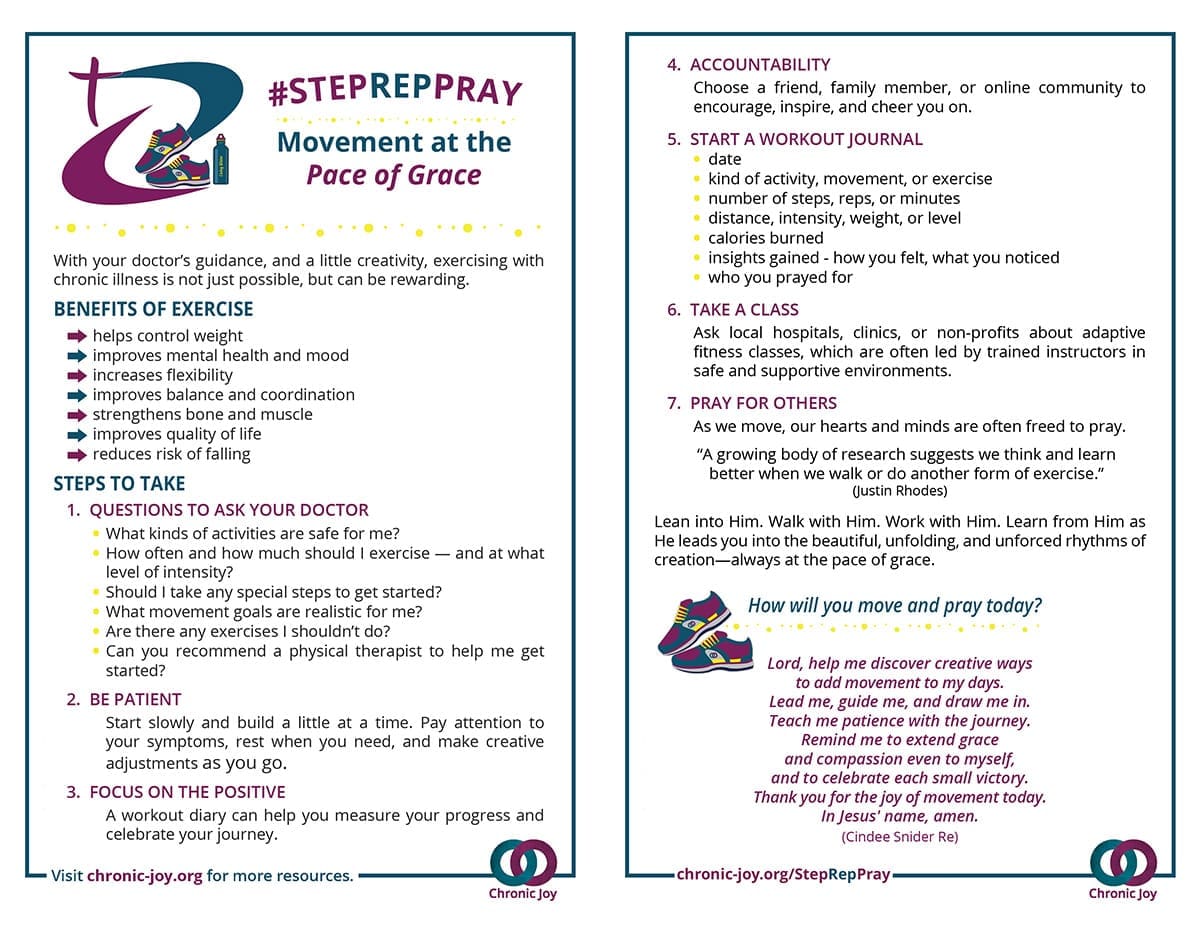
“Movement is an invitation to safely confront our emotional vulnerabilities.” Erin Burkhardt
MOVEMENT AND EMOTIONAL VULNERABILITY
Do you wrestle with the emotional toll of chronic illness? Are you struggling to confront your feelings, fearing they may overwhelm you? Consider incorporating exercise into your routine because it can greatly help you mentally and emotionally in your wellness journey, always at the “pace of grace.”
Exercise and physical activity can be difficult and varied when you have chronic illness. Some people live with extensive disabilities which make simple movements or activities impossible. Others may have less visible struggles but their choices are still greatly impacted. Whether small or large, easy movements and realistic exercise routines can make a positive impact, such as light stretching, yoga, or a short walk. These simple activities encourage your body to move in whatever capacity it can, creating emotional benefits.
MOVEMENT HELPS TO CONFRONT EMOTIONAL VULNERABILITY
Movement is an invitation to safely confront our emotional vulnerabilities.
- Such movement helps us reconnect and reengage, to courageously step back into relationship with a body that has betrayed us, caused us fear or anger, escalated our anxiety, and isolated us from community – and from ourselves.
- Movement invites us to acknowledge the shame and limitations of a body that might look and work differently because of chronic illness or because of lost function, lost identity, and lost abilities.
- Also, movement brings us face-to-face with vulnerability – but as we face the losses, express our grief, and bravely name our shame, Jesus invites us into gratitude, a taproot rhythm of grace.
When we can tap into gratitude, no matter our circumstances, we can enjoy peace and joy that not only benefits our emotions, but our whole selves: physically, mentally, and spiritually.
PRAYER
Heavenly Father, we thank you that you are full of grace and unending kindness. Help us to turn to you when the emotional strain of our chronic illness becomes too much to bear. Thank you that you gave us emotions and that we are free to express them. We ask for your help, so we might do that in healthy and honoring ways. We praise you for our bodies that are “fearfully and wonderfully made.” Help us to care for our bodies as best as we are able. Give us the wisdom to know our limits and to trust in you for strength. Thank you for your goodness every single day. Amen.
QUESTIONS FOR REFLECTION
- How do you currently feel about your chronic illness and the limitations it puts on you?
- What are some ways you manage the grief, frustration, and other emotions that stem from your illness?
- What are some simple movements and exercises that you can start to incorporate into your daily life at the “pace of grace?”
AN INVITATION
I invite you to check out #StepRepPray for more practical ways to help you connect with your body and emotions through movement. For now, I encourage you to take advantage of whatever capacity you have and make physical movement a priority today. Always remember that there is no right or wrong way to start moving your body and no expectation to do anything more than you are able. We get to live in the abundant grace of God, and we must grant ourselves that grace daily. Invite Jesus into this part of your life and ask Him to guide you into a routine that will help you manage the emotional difficulties of chronic illness.


Erin Burkhardt
Contributing Writer
Erin is a grateful follower of Jesus, navigating the different stages of life through the eyes of chronic illness. She has a passion for empowering others by encouraging them to trust God even in the most difficult circumstances. Erin and her husband (along with their two young boys) are purposeful and passionate in living out their faith and loving their neighbors. Her other passions include freelance writing, loom knitting, and fishing!

#StepRepPray Guide
With your doctor’s guidance and a little creativity, exercising with chronic illness is not only possible but can also be rewarding.

Recent Comments